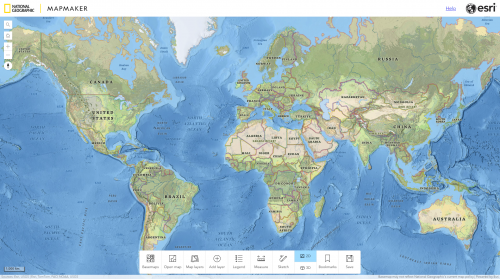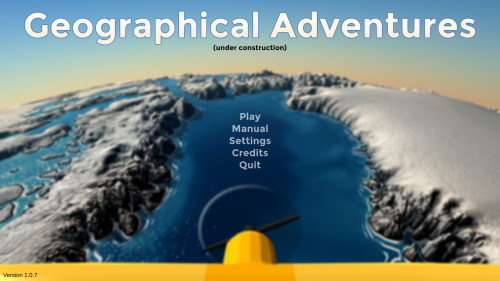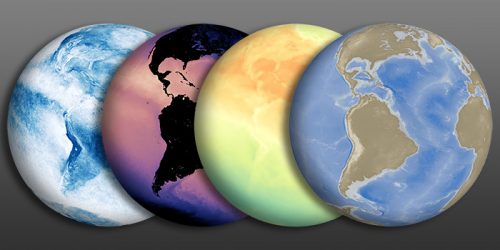Researching Game — Where Have All the Geography Majors Gone?
In this blog post, I want to report my researching on Geography games in the past week. Initially, I thought it would be very easy for me to find a couple of high-quality serious games or simulations for introduction to Geography major. Since I used quite frequently a lot of applications based on Geography – google map, Uber, Zillow (recently, I have been searching for new apartment rentals for next school year)… However, when I formally started to do the search, the difficulty was beyond my imagination. Finally, I only got a few directly related games about Geography major introduction.
Before searching, I tended to clarify the definition of Geography. With better understanding about the definition of Geography, I could trace the targeted games more accurately. I preferred the definition of Geography from the National Geography website after I compared different descriptions of “What is Geography” from different references, “Geography is the study of places and the relationships between people and their environments. Geographers explore both the physical properties of Earth’s surface and the human societies spread across it. They also examine how human culture interacts with the natural environment, and the way that locations and places can have an impact on people. Geography seeks to understand where things are found, why they are there, and how they develop and change over time(Geography, n.d.).”
Beyond the definition, I knew that as an expansive discipline, geography covers a lot of study which can always be confused with other disciplines in Environment Sciences and GeoScience. About three-quarters of graduates from the doctoral program become college professors or join college faculties(Beck, 2019). Then, based on the better understanding about what Geography as a major focuses on, I used the following platforms and methods to do the searching.
What did I find?

- I found this game on the website of National Geographic. I used “game” as a keyword and spotlighted the game from the search results.
- The core dynamic of this simulation is exploration. The purpose of this simulation is to invite learners to explore anywhere on the planet earth they interested in, and design a map with different layers which they want to have on the map. The different layers include many categories which can meet the designers’ personal preferences and help them understand the meaning of maps, as well as the work details of geographers.
- All ages will be welcome to use. The higer standard functions will be more suitable for high-school students and college students who are going to prefer geography as their majors.
- Geographical Adventures (Under Construction)
- https://sebastian.itch.io/geographical-adventures

- Firstly, I found an introduction video of the game from youtube, then I trace the game on itchi.io and github.
- It is a little game under development. The Core dynamics of the game are exploration and collecting. The game rules are simple: fly around the world, picking up packages and delivering them to various cities as players go. There are three locations marked at the top of the screen. At each location, players will find a hot air balloon waiting with a package for the players to collect. Fly the plane through the balloons to collect the packages. Once the package has been picked up, its location at the top of the screen will change to a delivery address. Fly over to that city based on geography knowledge and drop the package off there.
- All ages, especially designed for the players who want to change their understanding about world map and knowledge of cities all over the world.
- NASA Earth Observations
- Website: https://neo.gsfc.nasa.gov/

- I found this simulation from NASA website.
- The core dynamic of the simulation is exploration. Users can get visually descriptional data about energy, land, life, ocean of the world from a birdview angle, and the time bar at the bottom can show the date in different years, which are helpful to see the relative change and do comparison.
- All ages can use it, but it is more suitable for college students or graduate student who need specific data about geography.
- Mini Solar System
- Video introduction website: https://www.youtube.com/watch?v=PHnfQzlqKPg
- This is a serious game created by me.
- In Fall semester of 2023-2024, I learnt how to use OpenSimulator to creat desktop Virtual Reality project. When I used OpenSimulator to design my instructional content, I used more energy to decide which learning content I should create than thinking about what technologies I should use during my personal project. What kind of scenarios can I create in the virtual reality learning environment (VRLE) to provide the learners with a better learning experience than in the real learning environment? At that moment, a sentence sounded near my ears, “People do not learn from technology; they learn from thinking. When technologies can enhance students thinking, they should be used. Otherwise, they are probably no better than no technology.” This sentence was from David H. Jonassen, when he commented to the relationships between learning and technology during an interview(Simsek, 2012). My initial thinking for creating my VR project was a studying area contains more barriers or constraints for the learners in the real world. Both the small-sized and large-sized worlds met my assumption. E.g., a planet cell or a solar system is impossible for common learners to experience in real life, but in the VRLE, the answer is OK. Plus, in OpenSimulator, the avatar can fly to check the virtual creation from more dimensions, making it easier and more beneficial for learners who want to learn space science. Then, I created my personal VRLE, a Mini Solar System. In this serious game, players can manipulate an avantar to explore the mini solar system to better understand the location of our planet earth, then increase their interests in Geography learning.
- I believe this serious game is suitable for high-school students and college students to explore solar system in a VR setting.
What have I learned about games in my topic area?
In college, I minored in Science Education, which helped me understand the Geography was a broad major covered many study areas. According to play several games about geography, I can feel more realistically about what geography is about. But, the games and simulations I explored just covered superficial learning content, which showed a clear signal to us, the game designers to keep in mind the current gap.
There were quite a few apparent commonalities between the games. Most of the games, include many games I played but not introduced in this blog post, were related to maps. May be maps were much easier to be designed to games or simulations.
References
Geography. (n.d.). Retrieved February 8, 2024, from https://education.nationalgeographic.org/resource/geography-articleSimsek, A. (2012). Interview with David H. Jonassen: Looking at the Field of Educational Technology from Radical and Multiple Perspectives. Contemporary Educational Technology, 3(1). https://doi.org/10.30935/cedtech/6069
